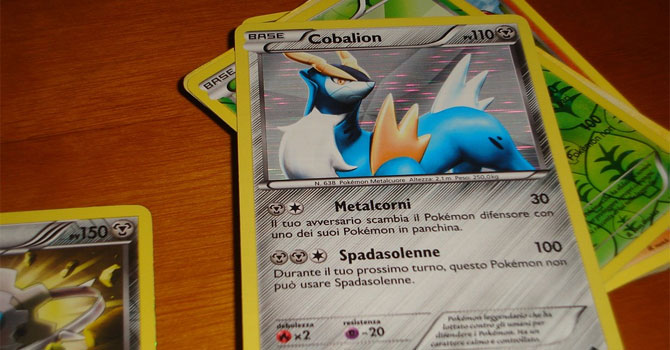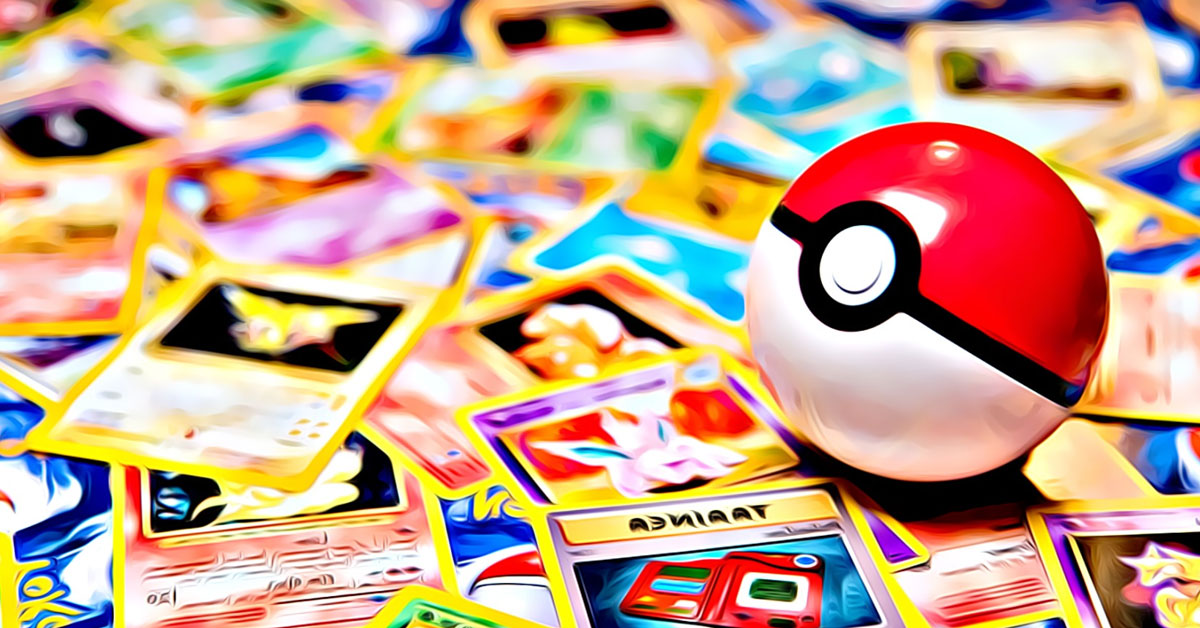Pokémon has been experiencing a resurgence in popularity in recent years, and it has made collectors young and old think they might sell Pokémon cards they have, whether from years ago or from weeks ago.
- Inbox Dollars - Get paid to check your email. $5 bonus just for signing up!
- Survey Junkie - The #1 survey site that doesn't suck. Short surveys, high payouts, simply the best.
- Nielsen - Download their app and get paid $50!
Selling or trading these cards might not be easy for you if you’re a true-blue collector of Pokémon cards, but if you need quick cash, selling your Pokémon cards may just be a convenient way to make some money by trading in something you already have.
In today’s post, I’ll delve into everything you need to know so you can sell your Pokémon cards and get some money from them.
How To Know if Your Pokémon Cards Are Worth Something
It’s hard to sell Pokémon cards if you don’t even know what you have.
So the first thing you need to do is to organize your collection.
Start by sorting the cards by set, indicated by a small symbol on the bottom right-hand corner of the Pokémon illustration for old sets, or on the bottom right-hand corner of the card for newer sets.

If you’re not sure which symbol means what, take a look at this comprehensive guide.
The next thing you need to do is to sort them by their card numbers. This number is indicated on the lower right-hand corner of the card, with the format X/Y.
The number X is the number of the actual card, and the number Y is the total number of cards in the deck. For example, if you see 4/100, then it’s the fourth card out of 100 cards in a deck.
If your card doesn’t have a symbol on it, it’s a base set card. There were only three sets of base set cards released in the US, so consider yourself lucky as these cards are where the money is at for most collectors.
Also, if your card only has one number instead of the X/Y format, that means your card is part of a Promotional deck.
Once you’ve organized your cards, the next thing to do is to make a list of all your cards. I recommend keeping this list in a spreadsheet, such as a Microsoft Excel file or a Google Sheet.
Keeping the list in a spreadsheet allows you to keep a digital record and it becomes easier to do the next step as well, which is determining how valuable your Pokémon cards are.
There are two important factors when determining the value of your cards: their condition and their rarity.
How To Tell The Condition Of A Card
The TCGPlayer card condition guide is a great reference for judging the condition of your cards.
Cards in “near mint” condition show minimal to no wear; crisp corners, unblemished edges, and no marks on the surface.
A tiny nick or a scratch may be forgivable, but overall it should look nearly unplayed.
If you have a foil card, however, even the tiniest nick is noticeable. “Near mint foils,” therefore, have absolutely no markings or flaws.
“Lightly played” cards have minor border or corner wear, some scuffs and scratches, but no folds, bends, or liquid damage.
“Lightly played foils” are comparable to near-mint cards in that they have very minor flaws.
“Moderately played” cards may have some corner or edge damages, scratches or scuffs, or even creases.
“Moderately played foils” may have a little flaking, especially on the edges, and may have some scratches or warps, but no creases or folds.
No joke. Here are the fastest ways to make easy money online. Click here to see how.
“Heavily played” cards show worse signs of wear. Some liquid damage may be acceptable, but not if it fades the ink too badly. Creasing is also acceptable. These criteria also apply to “heavily played foils.”
“Damaged” cards are in the worst condition; tears, creases, and heavy scratches that affect the structural integrity of the card may be present. These criteria apply to “damaged foils” as well.
How To Tell The Rarity Of A Card
If you can recall how you got your cards, that will help you determine how rare they are. Each collection has a different chance of having a rare card, so knowing how you got your cards will help you know if you’re holding a rare one.
Normally, more expensive collections of cards, like those housed in boxes and tins, have higher chances of having rare cards.
Those that have a circle or diamond won’t be worth much right now but could be worth a lot someday when they’re rare.
Cards with a star or a holofoil picture, a star followed by a letter or symbol, or secret cards (that is, those that have an X/Y number where X is greater than Y).
Promotional cards are ones that are only given out during promotional events, which are marked with the word “Promo” and a black star. They vary in value; some are common while others are incredibly rare.
First edition cards are rare and valuable, and the exact price depends on the collection they belong to.
Once you’ve assessed the condition and rarity of the cards, document these in your spreadsheet as well so you can see everything at a glance.
How To Price Your Pokémon Cards
Now that you know the conditions and rarities of your cards, you can set the selling prices of your Pokémon cards.
Do your price research thoroughly; the more aligned your prices are to the market, the better chances you’ll have of selling your Pokémon cards.
There are approximately thousands of unique Pokémon trading cards and prices change over time as people buy, sell, and trade these cards.
The best places to do your research are:
Also, many sites that sell Pokémon cards online list down all the most popular and most in-demand cards, giving you an idea of how much you can make if you have those particular cards.
Sometimes, though, prices differ wildly among websites.
In this case, you might want to search for a trading card forum online or a hobby shop in your area that can provide you a fair price for your cards.
Individual cards that are less than near-mint condition or not very rare are likely to be worth less than a few dollars, so consider selling them as a bundle.
On the other hand, if you’ve hit the jackpot and have a card that’s worth $100 or more, it’s recommended by most Pokémon traders to have it authenticated by the Professional Sports Authenticator (PSA).
Having your card authenticated also ensures that you’re not selling a fake or bogus card. However, authentication costs some money, so make sure the card is worth more than that.
You can make money from home and it doesn't have to be challenging. Click here to see how.
Where To Sell Your Pokémon Cards
When you’ve assessed and priced your Pokémon cards, you’re now ready to sell!
But where?
Here is a list of tried-and-tested marketplaces where you can sell your Pokémon cards.
1. eBay
Nothing beats a classic, apparently.
eBay remains a popular place to sell Pokémon cards for its sheer ease and simplicity.
2. TCGplayer
TCGplayer is a huge marketplace for gaming collectibles, so aside from Pokémon cards, you can also buy and sell Magic: The Gathering, Yu-Gi-Oh!, and other similar cards.
Aside from the marketplace itself, they have plenty of resources for sellers, such as a pricing guide, symbol guide, and other resources to help you sell your Pokémon cards effectively.
3. Troll And Toad
Troll and Toad is another online marketplace that trades in gaming cards.
They have an illustrated Pokemon selling guide, with the important symbols, techniques for assessing the condition and rarity of a card, and many more tools to help you sell.
4. Professor-Oak.com
Professor Oak is a premium Pokémon card trading marketplace that’s very strict in their standards, so make sure you follow their four steps to selling your Pokémon cards.
5. Cardmarket
Europe-based Cardmarket is a peer-to-peer online marketplace making buying and selling Pokémon cards simple for everyone involved.
Simply create an account, look over their grading guidelines, look at similar cards to get an idea of the right prices for your cards, and then list your cards for sale.
6. CCGCastle
CCG Castle is another option to sell your Pokémon cards online, which is a good choice for those who would like to trade their Pokémon card collection for another type of card collection, like Dragonball Z, My Little Pony, and many more.
Otherwise, you can opt to get your payout through PayPal.
7. Pokémon events
If you prefer selling your cards in person, attending Pokémon events can be worth the hassle. Find comic, video game, and cosplay conventions near you.
Beware of people trying to run a scam (e.g., counterfeit money, fake online money transfers, etc.), or trade you fake cards in exchange for your real cards.
8. Facebook Marketplace
You may not have to look very far to sell your cards; a local buyer may just be waiting to connect with you.
Facebook Marketplace may be a convenient option, because you get to set your prices. However, you need to do your due diligence and be safe. After all, you’re dealing with strangers online.
9. Craigslist
When it comes to local transactions, Craigslist is still a viable option, but again, you’ll need to be careful when dealing here.
10. Local comic book or hobby shops
Your local hobby shops are more than just a place for you to buy; you can probably offload some of your Pokémon cards to the shop owner.
If they want to buy cards for reselling, they’ll try to buy them for the lowest price they can, so be prepared to haggle.
Bonus: How To Take Care Of Your Pokémon Cards
If you’re planning to sell your Pokémon cards, not all of them are going to be sold immediately.
You can expect it to take some time before you’re actually able to sell all of them.
In the meantime, you’ll need to take care of the cards you have so that you don’t devalue them inadvertently.
Here are some ways you can take care of your Pokémon cards.
Handle them with care.
Make sure to take care when handling your cards so that you don’t leave too much fingerprint oils and don’t cause too much friction.
Wearing gloves while handling your cards may be a bit extreme, but you may have to do this if you have rare Pokémon cards, especially the holographic ones.
Place all of your cards in protective sleeves.
The best practice is to place the cards into individual penny sleeves and then into individual top loaders.
This way, your cards are protected against wear and tear, moisture, as well as UV light.
If you have many cards and want to easily see them and store them so that they don’t get lost, there are sleeves you can purchase that can fit 9 cards and can be held in binders.
Whether you use top loaders or binders, it’s still good practice to place them into penny sleeves first.
Keep your cards away from the elements.
Even if you have the cards in protective sleeves and binders, UV light, temperature, and moisture can still warp the cards or fade away the ink.
As much as possible, keep your cards somewhere dark, cold, and dry.
Never use a rubber band to hold the cards together.
Rubber bands cut into the edges and the material melts into the cards. Needless to say, this damage builds up over time and devalues your cards.
The Bottom Line
Pokémon is all the rage (again), and if you have Pokémon cards that you can sell, why not make some money off them?
These hidden treasures can make you a pretty penny if you’re lucky to have a rare one in great condition.
If you don’t have any Pokémon cards to sell, or if you don’t have Pokémon cards that are of value, here are more things to sell to make money.
Or if buying and selling is more your style, here are some products you can buy and sell for a profit.





